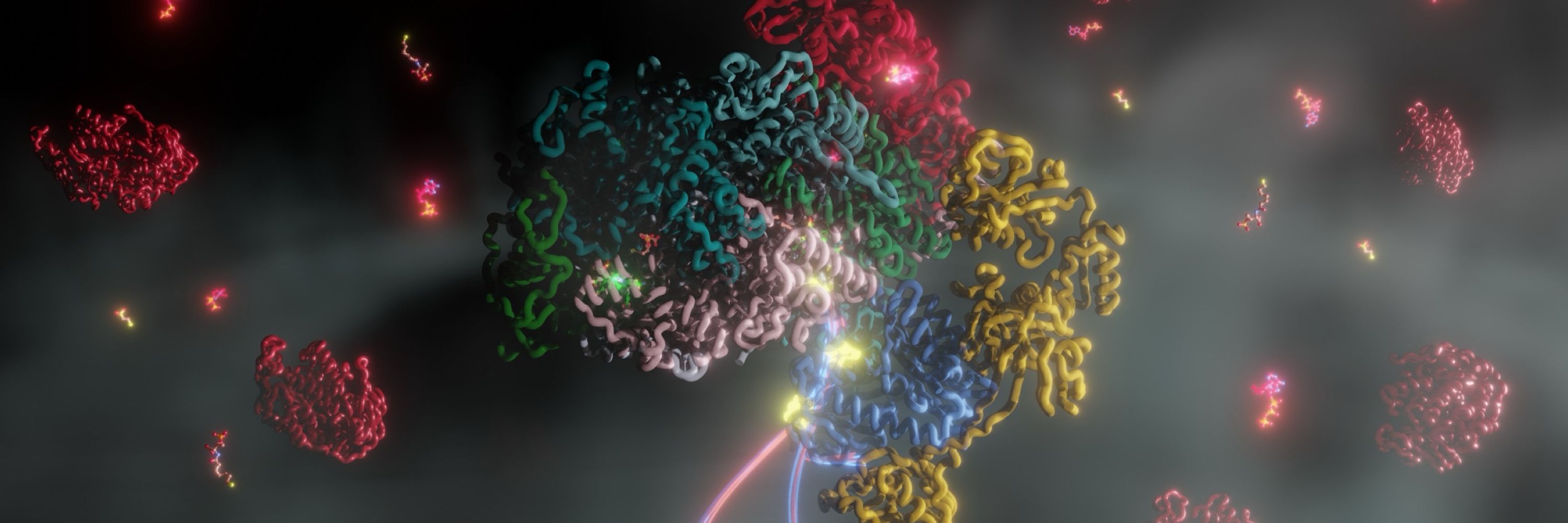
Anuj
@rnfr2d2.bsky.social
CryoEM | Anaerobic structural biology | Bioenergetics | CO2 fixation and energy conservation
SYNMIKRO Marburg
SYNMIKRO Marburg
Pinned
Anuj
@rnfr2d2.bsky.social
· Apr 16

Structure of the ATP-driven methyl-coenzyme M reductase activation complex - Nature
The structure and function of the MCR activation complex from Methanococcus maripaludis were revealed, demonstrating its ATP-dependent ability to activate MCR and form methane while uncovering a uniqu...
www.nature.com
For decades, how methanogenic archaea activate the MCR complex to produce methane remained a mystery. Today in Nature, we report the high-resolution cryo-EM structure of the MCR activation complex!
www.nature.com/articles/s41...
www.nature.com/articles/s41...
Reposted by Anuj
I am very excited to share our new preprint - "A Zundel Ion in the Catalytic Proton Transfer Pathway of [FeFe]-Hydrogenase" - for which we revisited an older theory of ours, and came to surprising conclusions... 🧵
doi.org/10.26434/che...
doi.org/10.26434/che...

November 6, 2025 at 12:40 PM
I am very excited to share our new preprint - "A Zundel Ion in the Catalytic Proton Transfer Pathway of [FeFe]-Hydrogenase" - for which we revisited an older theory of ours, and came to surprising conclusions... 🧵
doi.org/10.26434/che...
doi.org/10.26434/che...
Reposted by Anuj
Excited to share our latest @nature.com: How does naloxone (Narcan) stop an opioid overdose? We determined the first GDP-bound μ-opioid receptor–G protein structures and found naloxone traps a novel "latent” state, preventing GDP release and G protein activation.💊🧪 🧵👇 www.nature.com/articles/s41...
November 5, 2025 at 4:23 PM
Excited to share our latest @nature.com: How does naloxone (Narcan) stop an opioid overdose? We determined the first GDP-bound μ-opioid receptor–G protein structures and found naloxone traps a novel "latent” state, preventing GDP release and G protein activation.💊🧪 🧵👇 www.nature.com/articles/s41...
Reposted by Anuj
Our latest work on the nitrogenase-like methylthio-alkane reductase, which specifically reduces reduces carbon-sulfide bonds is now out @natcatal.nature.com: doi.org/10.1038/s419.... We find for the first time large #nitrogenase metalloclusters (P- and L-cluster) outside nitrogenases.
October 23, 2025 at 10:09 AM
Our latest work on the nitrogenase-like methylthio-alkane reductase, which specifically reduces reduces carbon-sulfide bonds is now out @natcatal.nature.com: doi.org/10.1038/s419.... We find for the first time large #nitrogenase metalloclusters (P- and L-cluster) outside nitrogenases.
Great work from the lab of @rebeleinlab.bsky.social ! Now out in @natcatal.nature.com
Microbial enzymes hold the key to greener plastics! Rhodospirillum rubrum can produce ethylene without releasing CO₂. A team @rebeleinlab.bsky.social purified the enzyme and solved its structure, an important step towards #SustainableChemistry.

Microbial Strategy for Renewable Plastic
A bacterial enzyme could make it possible to produce the plastic building block ethylene without the emission of CO₂. Researchers at the Max Planck Institute for Terrestrial Microbiology, led by Dr Johannes Rebelein, have now investigated the enzyme's structure and function in vitro.These findings lay the groundwork for more sustainable biotechnological ethylene production and improve our understanding of early biochemical processes.
s.gwdg.de
October 23, 2025 at 9:52 AM
Great work from the lab of @rebeleinlab.bsky.social ! Now out in @natcatal.nature.com
Reposted by Anuj
New preprint: Methyl co-enzme M reductase encoding (potentially methanogenic) Thermoproteota are widespread and transcriptionally active in diverse anoxic ecosystems! @dr-zj.bsky.social, Matthew Kollom & @emileyeloe-fadrosh.bsky.social www.biorxiv.org/cgi/content/... Funded by the DOE BER program.

October 16, 2025 at 9:10 PM
New preprint: Methyl co-enzme M reductase encoding (potentially methanogenic) Thermoproteota are widespread and transcriptionally active in diverse anoxic ecosystems! @dr-zj.bsky.social, Matthew Kollom & @emileyeloe-fadrosh.bsky.social www.biorxiv.org/cgi/content/... Funded by the DOE BER program.
Reposted by Anuj
Have you ever looked at the night sky and wondered if there’s a chlorophyll f in the reaction centre of Photosystem I from far-red light adapted cyanobacteria? 🦠
Well, we did (don’t judge) and the work that followed is now out as a First Release in @science.org
www.science.org/doi/10.1126/...
Well, we did (don’t judge) and the work that followed is now out as a First Release in @science.org
www.science.org/doi/10.1126/...

Locating the missing chlorophylls f in far-red photosystem I
The discovery of chlorophyll f-containing photosystems, with their long-wavelength photochemistry, represented a distinct, low-energy paradigm for oxygenic photosynthesis. Structural studies on chloro...
www.science.org
October 11, 2025 at 10:37 AM
Have you ever looked at the night sky and wondered if there’s a chlorophyll f in the reaction centre of Photosystem I from far-red light adapted cyanobacteria? 🦠
Well, we did (don’t judge) and the work that followed is now out as a First Release in @science.org
www.science.org/doi/10.1126/...
Well, we did (don’t judge) and the work that followed is now out as a First Release in @science.org
www.science.org/doi/10.1126/...
Reposted by Anuj
Cryo-EM structure of Chlamydomonas Photosystem I complexedwith the alternative electron donor cytochrome c6 www.biorxiv.org/content/10.1101/2025.09.08.674899v1 #cryoem
September 9, 2025 at 7:10 AM
Cryo-EM structure of Chlamydomonas Photosystem I complexedwith the alternative electron donor cytochrome c6 www.biorxiv.org/content/10.1101/2025.09.08.674899v1 #cryoem
Reposted by Anuj
Initial attempt at replicating in relion (parameters in next post). This is for Aca2-RNA, using a 100k subset of the 2D-classified particles (no prior 3D cleanup).
A 1-class ab initio in relion, then local refinement in relion (1.8deg searches+blush) gives a nominally 3.3Å map; 3.5 Å w/out blush.
A 1-class ab initio in relion, then local refinement in relion (1.8deg searches+blush) gives a nominally 3.3Å map; 3.5 Å w/out blush.
September 26, 2025 at 2:28 AM
Initial attempt at replicating in relion (parameters in next post). This is for Aca2-RNA, using a 100k subset of the 2D-classified particles (no prior 3D cleanup).
A 1-class ab initio in relion, then local refinement in relion (1.8deg searches+blush) gives a nominally 3.3Å map; 3.5 Å w/out blush.
A 1-class ab initio in relion, then local refinement in relion (1.8deg searches+blush) gives a nominally 3.3Å map; 3.5 Å w/out blush.
Reposted by Anuj
Happy to share that our story on the bacterial archaellum was published today in @natmicrobiol.nature.com
www.nature.com/articles/s41...
Congrats to the authors: @sshamphavi.bsky.social @loumollat.bsky.social @mariejoest.bsky.social Najwa Taib and @sgribaldo.bsky.social
www.nature.com/articles/s41...
Congrats to the authors: @sshamphavi.bsky.social @loumollat.bsky.social @mariejoest.bsky.social Najwa Taib and @sgribaldo.bsky.social
September 17, 2025 at 5:41 PM
Happy to share that our story on the bacterial archaellum was published today in @natmicrobiol.nature.com
www.nature.com/articles/s41...
Congrats to the authors: @sshamphavi.bsky.social @loumollat.bsky.social @mariejoest.bsky.social Najwa Taib and @sgribaldo.bsky.social
www.nature.com/articles/s41...
Congrats to the authors: @sshamphavi.bsky.social @loumollat.bsky.social @mariejoest.bsky.social Najwa Taib and @sgribaldo.bsky.social
Reposted by Anuj
This one is a bit of a departure from the usual and definitely a work in progress!
We found that by using ab initio reconstruction at very high res, in very small steps, we could crack some small structures that had eluded us - e.g. 39kDa iPKAc (EMPIAR-10252), below.
Read on for details... 1/x
We found that by using ab initio reconstruction at very high res, in very small steps, we could crack some small structures that had eluded us - e.g. 39kDa iPKAc (EMPIAR-10252), below.
Read on for details... 1/x
September 13, 2025 at 12:05 AM
This one is a bit of a departure from the usual and definitely a work in progress!
We found that by using ab initio reconstruction at very high res, in very small steps, we could crack some small structures that had eluded us - e.g. 39kDa iPKAc (EMPIAR-10252), below.
Read on for details... 1/x
We found that by using ab initio reconstruction at very high res, in very small steps, we could crack some small structures that had eluded us - e.g. 39kDa iPKAc (EMPIAR-10252), below.
Read on for details... 1/x
Reposted by Anuj
Sub-cellular chemical mapping in bacteria using correlated cryogenic electron and mass spectrometry imaging
Congrats Hannah Ochner and authors on this important paper! Strong collaboration with @kiranrpatil.bsky.social
www.biorxiv.org/cgi/content/...
@mrclmb.bsky.social @wellcometrust.bsky.social
Congrats Hannah Ochner and authors on this important paper! Strong collaboration with @kiranrpatil.bsky.social
www.biorxiv.org/cgi/content/...
@mrclmb.bsky.social @wellcometrust.bsky.social

August 31, 2025 at 6:44 PM
Sub-cellular chemical mapping in bacteria using correlated cryogenic electron and mass spectrometry imaging
Congrats Hannah Ochner and authors on this important paper! Strong collaboration with @kiranrpatil.bsky.social
www.biorxiv.org/cgi/content/...
@mrclmb.bsky.social @wellcometrust.bsky.social
Congrats Hannah Ochner and authors on this important paper! Strong collaboration with @kiranrpatil.bsky.social
www.biorxiv.org/cgi/content/...
@mrclmb.bsky.social @wellcometrust.bsky.social
Reposted by Anuj
It is out now 🥳🥂
I am very happy to be part of this nice collaboration in which we were able to characterize different bacterial chemoreceptors and their ligand specificities. Amazing teamwork with Wenhao Xu, the Sourjik lab, @bangebalcony.bsky.social, et. al 🤩
👇👇👇
www.pnas.org/doi/10.1073/...
I am very happy to be part of this nice collaboration in which we were able to characterize different bacterial chemoreceptors and their ligand specificities. Amazing teamwork with Wenhao Xu, the Sourjik lab, @bangebalcony.bsky.social, et. al 🤩
👇👇👇
www.pnas.org/doi/10.1073/...
PNAS
Proceedings of the National Academy of Sciences (PNAS), a peer reviewed journal of the National Academy of Sciences (NAS) - an authoritative source of high-impact, original research that broadly spans...
www.pnas.org
August 26, 2025 at 9:06 PM
It is out now 🥳🥂
I am very happy to be part of this nice collaboration in which we were able to characterize different bacterial chemoreceptors and their ligand specificities. Amazing teamwork with Wenhao Xu, the Sourjik lab, @bangebalcony.bsky.social, et. al 🤩
👇👇👇
www.pnas.org/doi/10.1073/...
I am very happy to be part of this nice collaboration in which we were able to characterize different bacterial chemoreceptors and their ligand specificities. Amazing teamwork with Wenhao Xu, the Sourjik lab, @bangebalcony.bsky.social, et. al 🤩
👇👇👇
www.pnas.org/doi/10.1073/...
Reposted by Anuj
Very excited about this story: Inês Pereira et al. reveal the role of selenocysteine in catalysis and O2-tolerance of a tungsten-dependent formate dehydrogenase (via ACS Catalysis)
doi.org/10.1021/acsc...
doi.org/10.1021/acsc...
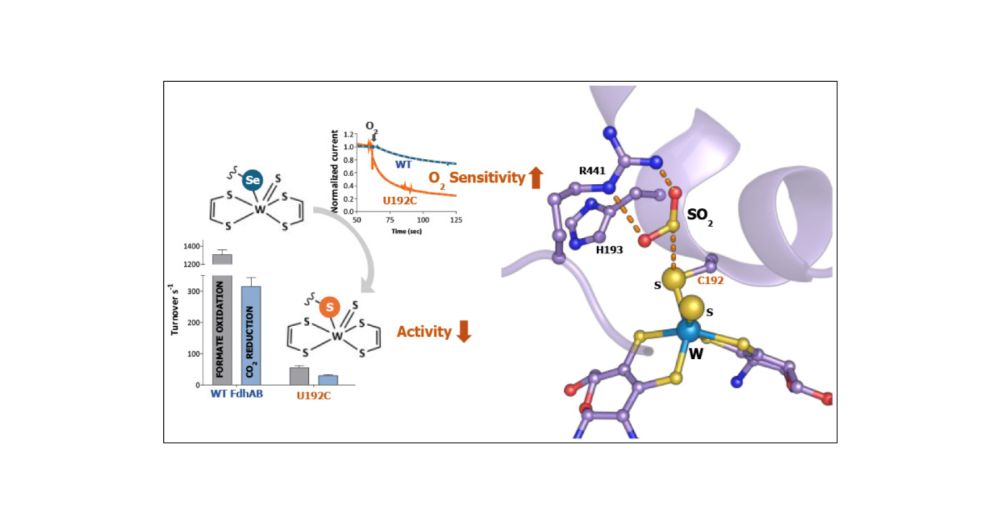
The Role of Selenocysteine in Catalysis and Oxygen Tolerance of a W-Dependent Formate Dehydrogenase
Metal-dependent formate dehydrogenases (FDHs) catalyze, under mild conditions, the reversible reduction of CO2 to formate, a versatile C1 feedstock that can contribute to a carbon-neutral economy. Metal-dependent FDHs are the most widespread selenoproteins found in bacteria, and around 44% of them include selenocysteine (Sec) as a ligand to the Mo/W active site. In the sulfate-reducer Nitratidesulfovibrio vulgaris Hildenborough, the main FDH responsible for CO2 reduction is the W/Sec-dependent FdhAB, which is among the most active CO2 reductases reported so far. In contrast to most metal-dependent FDHs, this enzyme is relatively O2-tolerant and can be purified aerobically. In this work, we evaluated the role of Sec in the catalytic and stability properties of the W/Sec-FdhAB. For that, a Sec-to-Cys variant (U192C) was created, its catalytic and spectroscopic properties were characterized, and its crystal structure was determined. Sec substitution by Cys strongly affects activity, decreases the KM for formate, and increases susceptibility to O2. While Sec-to-Cys replacement induces only weak changes of the WV EPR signals, using 77Se-labeled enzyme, we could show that Sec undoubtedly coordinates the W metal in the WV redox state. The crystal structure of U192C confirmed previous findings on the redox switch mechanism of activation and protection of FdhAB, while revealing a putative catalytic intermediate of FdhAB with Arg441 orienting a CO2 substrate analog (probably SO2) in the active site. Overall, the results indicate that Sec plays a critical role in the high activity displayed by W/Sec-FdhAB, and that it may also be involved in or modulate the proton transfer to and from the active site.
doi.org
July 19, 2025 at 10:46 AM
Very excited about this story: Inês Pereira et al. reveal the role of selenocysteine in catalysis and O2-tolerance of a tungsten-dependent formate dehydrogenase (via ACS Catalysis)
doi.org/10.1021/acsc...
doi.org/10.1021/acsc...
Reposted by Anuj
Proud to see our work on metalloenzymes - and methyl coenzyme M reductase (MCR) in particular - featured in the print version of Berlin's @tagesspiegel.de 🤩
⛓️ www.uni-potsdam.de/fileadmin/pr...
⛓️ www.uni-potsdam.de/fileadmin/pr...

July 17, 2025 at 9:09 AM
Proud to see our work on metalloenzymes - and methyl coenzyme M reductase (MCR) in particular - featured in the print version of Berlin's @tagesspiegel.de 🤩
⛓️ www.uni-potsdam.de/fileadmin/pr...
⛓️ www.uni-potsdam.de/fileadmin/pr...
Reposted by Anuj
New in @science.org
We built a safe, atomic-resolution version of the Powassan virus—a deadly tick-borne #flavivirus with no vaccine.
✅ First structure ever
✅ Safe to handle (BSL-2)
✅ Platform for vaccines & antivirals
Let me show you 🧵 (1/5)
Link: www.science.org/doi/10.1126/...
We built a safe, atomic-resolution version of the Powassan virus—a deadly tick-borne #flavivirus with no vaccine.
✅ First structure ever
✅ Safe to handle (BSL-2)
✅ Platform for vaccines & antivirals
Let me show you 🧵 (1/5)
Link: www.science.org/doi/10.1126/...
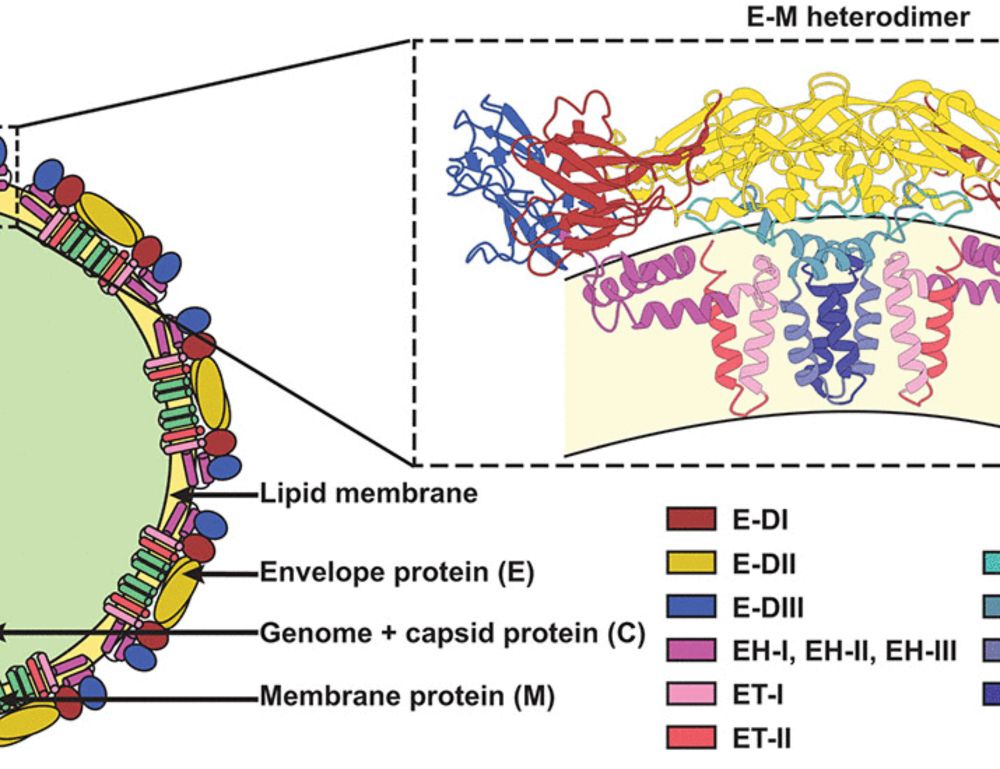
Atomic-resolution structure of a chimeric Powassan tick-borne flavivirus
The 2.8-Å resolution structure is presented for a chimeric construct of an emerging tick-borne flavivirus, Powassan virus.
www.science.org
July 9, 2025 at 8:11 PM
New in @science.org
We built a safe, atomic-resolution version of the Powassan virus—a deadly tick-borne #flavivirus with no vaccine.
✅ First structure ever
✅ Safe to handle (BSL-2)
✅ Platform for vaccines & antivirals
Let me show you 🧵 (1/5)
Link: www.science.org/doi/10.1126/...
We built a safe, atomic-resolution version of the Powassan virus—a deadly tick-borne #flavivirus with no vaccine.
✅ First structure ever
✅ Safe to handle (BSL-2)
✅ Platform for vaccines & antivirals
Let me show you 🧵 (1/5)
Link: www.science.org/doi/10.1126/...
Reposted by Anuj
Our new preprint: how photoprotection is spatially coordinated with energy metabolism. Photosystem I is major source of radicals. We report EM structure of PSI in complex with superoxide dismutase SOD: direct link between energy conversion & oxidative stress defence
www.biorxiv.org/content/10.1...
www.biorxiv.org/content/10.1...
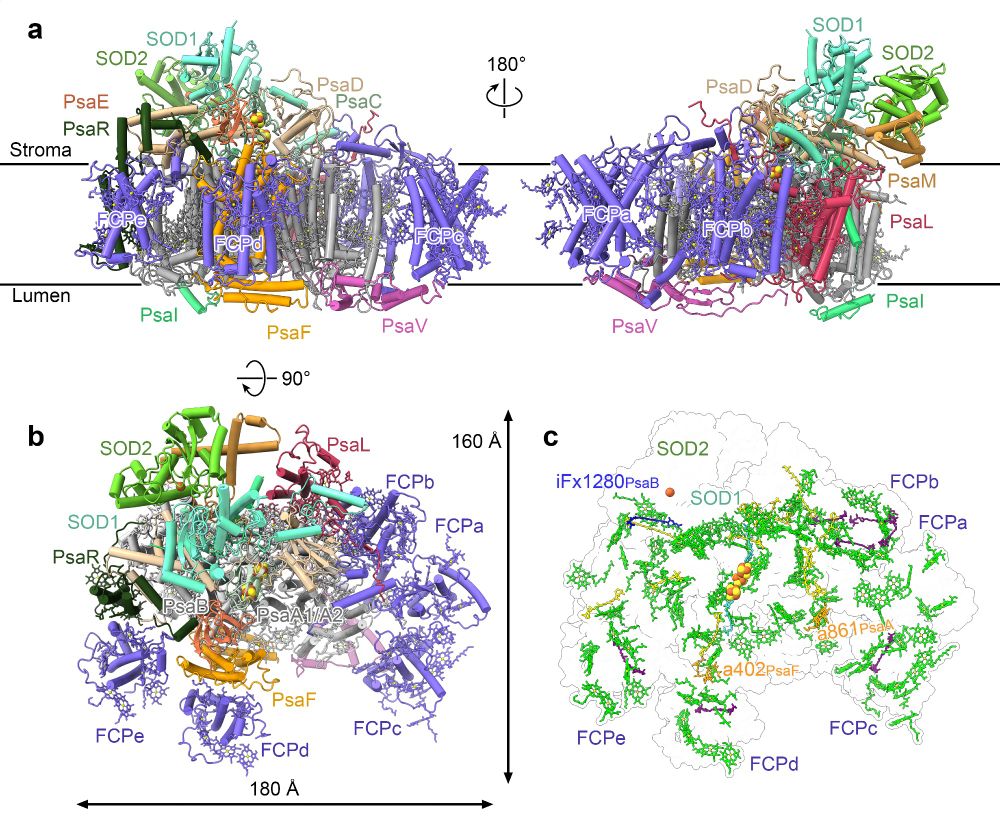
July 7, 2025 at 6:03 AM
Our new preprint: how photoprotection is spatially coordinated with energy metabolism. Photosystem I is major source of radicals. We report EM structure of PSI in complex with superoxide dismutase SOD: direct link between energy conversion & oxidative stress defence
www.biorxiv.org/content/10.1...
www.biorxiv.org/content/10.1...
Reposted by Anuj
Our new consensus statement on reducing and reporting contamination in microbiome studies is the cover image of this month's Nature Microbiology: www.nature.com/articles/s41... In the cover photo, you can see our postdoc Sophie Holland in fully PPE sampling the atmosphere of terrestrial Antarctica.
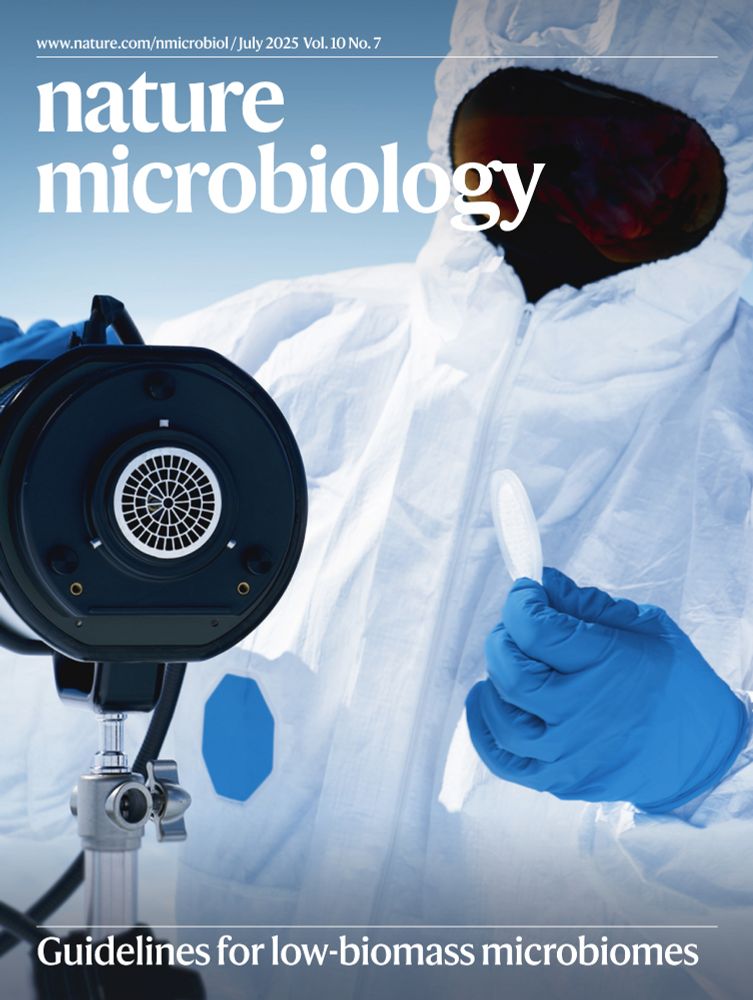
July 3, 2025 at 3:22 PM
Our new consensus statement on reducing and reporting contamination in microbiome studies is the cover image of this month's Nature Microbiology: www.nature.com/articles/s41... In the cover photo, you can see our postdoc Sophie Holland in fully PPE sampling the atmosphere of terrestrial Antarctica.
Reposted by Anuj
Our new study shows how nickel limitation changes electron flow in methanogens.
@nature.com
#methanogens #methane #archaea
www.nature.com/articles/s41...
@nature.com
#methanogens #methane #archaea
www.nature.com/articles/s41...

Electron flow in hydrogenotrophic methanogens under nickel limitation - Nature
Two distantly related methanogens shift the methanogenic pathway under nickel limitation, suggesting that methanogens adapt to changing bioavailability of nickel by rerouting electron flow between two...
www.nature.com
July 3, 2025 at 8:09 AM
Our new study shows how nickel limitation changes electron flow in methanogens.
@nature.com
#methanogens #methane #archaea
www.nature.com/articles/s41...
@nature.com
#methanogens #methane #archaea
www.nature.com/articles/s41...
Reposted by Anuj
Happy to share Yiting's new paper on artificial micro hydrogenase aka... Ferredoxin⁉️
Out now in Advanced Science doi.org/10.1002/advs...
Out now in Advanced Science doi.org/10.1002/advs...
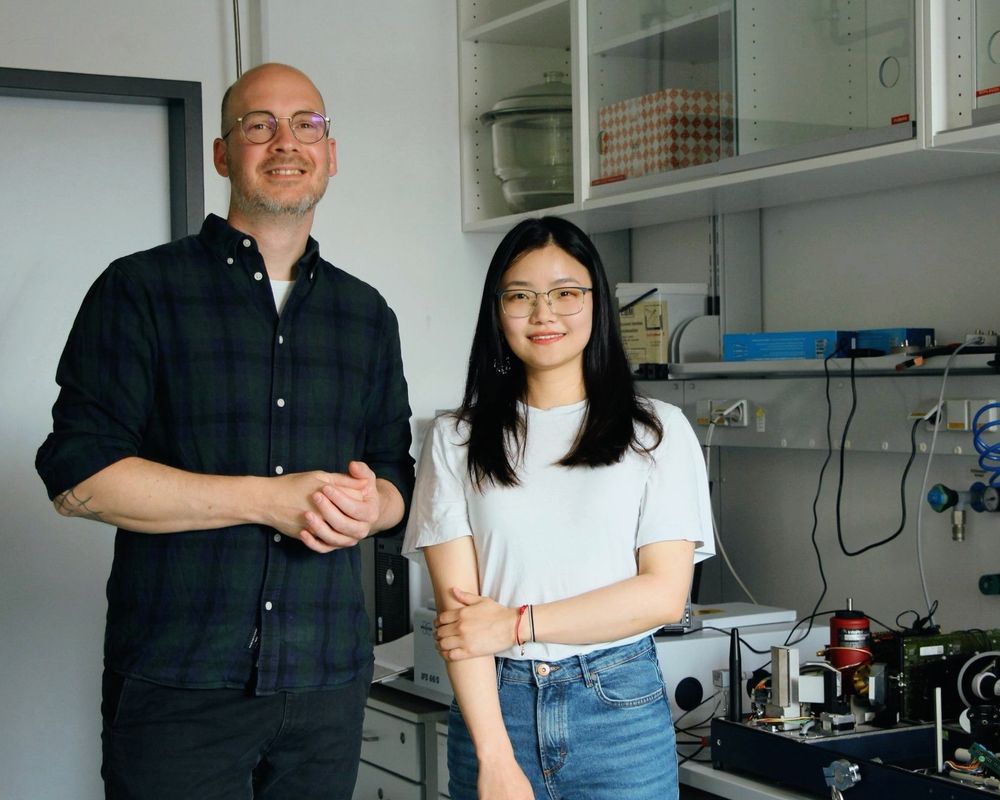
June 19, 2025 at 1:38 PM
Happy to share Yiting's new paper on artificial micro hydrogenase aka... Ferredoxin⁉️
Out now in Advanced Science doi.org/10.1002/advs...
Out now in Advanced Science doi.org/10.1002/advs...
Reposted by Anuj
Our ferredoxin story @chemicalscience.rsc.org now in print, just in time for my presentation tomorrow #ISABC17 👏🏻
Sahin et al., Chem. Sci., 2025, 16, 10465-10475
pubs.rsc.org/en/content/a...
Sahin et al., Chem. Sci., 2025, 16, 10465-10475
pubs.rsc.org/en/content/a...

June 15, 2025 at 8:56 PM
Our ferredoxin story @chemicalscience.rsc.org now in print, just in time for my presentation tomorrow #ISABC17 👏🏻
Sahin et al., Chem. Sci., 2025, 16, 10465-10475
pubs.rsc.org/en/content/a...
Sahin et al., Chem. Sci., 2025, 16, 10465-10475
pubs.rsc.org/en/content/a...
Excellent work from my dear friend Sriram! Many congratulations @georghochberg.bsky.social !
New paper from the lab from Sriram Garg in my group. We introduce a general substitution matrix for structural phylogenetics. I think this is a big deal, so read on below if you think deep history is important. academic.oup.com/mbe/advance-...
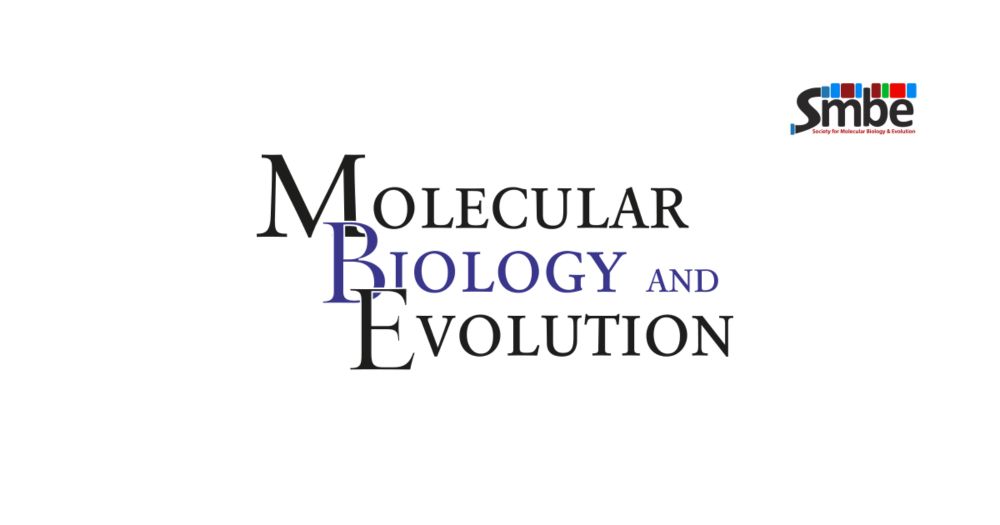
A general substitution matrix for structural phylogenetics.
Abstract. Sequence-based maximum likelihood (ML) phylogenetics is a widely used method for inferring evolutionary relationships, which has illuminated the
academic.oup.com
June 11, 2025 at 5:41 PM
Excellent work from my dear friend Sriram! Many congratulations @georghochberg.bsky.social !
Excellent work from my colleagues Tristan and Eva on the structure of the ancient sodium pumping Mtr complex from methanogens! Happy to contribute alongside @tomaspascoa.bsky.social @ezimmer.bsky.social @schullerjm.bsky.social
Proud to present the lab's latest work. The full structure of the sodium translocating methyltransferase (Mtr) bound to a small oxygen-responsive small protein MtrI. Work by Tristan and together with @schmitzstreitslab.bsky.social .
www.biorxiv.org/content/10.1101/2025.06.02.657420v1
www.biorxiv.org/content/10.1101/2025.06.02.657420v1
June 4, 2025 at 7:37 PM
Excellent work from my colleagues Tristan and Eva on the structure of the ancient sodium pumping Mtr complex from methanogens! Happy to contribute alongside @tomaspascoa.bsky.social @ezimmer.bsky.social @schullerjm.bsky.social
Reposted by Anuj
CLUSTERING FOR METHANE
Nice write-up @natcatal.nature.com of our recent article on MCR activation 🙏🏻
www.nature.com/articles/s41...
Nice write-up @natcatal.nature.com of our recent article on MCR activation 🙏🏻
www.nature.com/articles/s41...
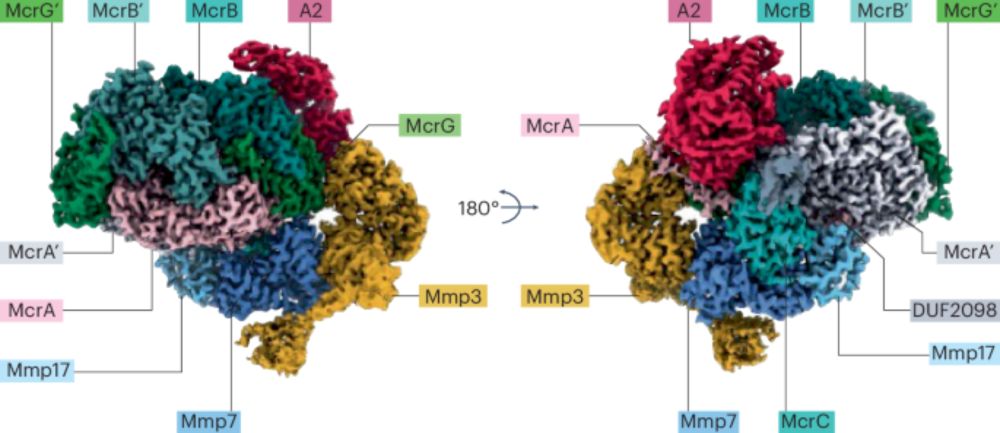
Clustering for methane - Nature Catalysis
Nature Catalysis - Clustering for methane
www.nature.com
June 4, 2025 at 7:15 AM
CLUSTERING FOR METHANE
Nice write-up @natcatal.nature.com of our recent article on MCR activation 🙏🏻
www.nature.com/articles/s41...
Nice write-up @natcatal.nature.com of our recent article on MCR activation 🙏🏻
www.nature.com/articles/s41...
Reposted by Anuj
Leveraging spectroscopic and structural approaches we obtained new insights into the role of #ferredoxins in N2 fixation. Just published in Chemistry – A European Journal: doi.org/10.1002/chem...! Great work by Holly Addison. Fantastic collaboration with Antonio Pierik on the EPR characterization.

Two Key Ferredoxins for Nitrogen Fixation Have Different Specificities and Biophysical Properties
Two ferredoxins, FdC and FdN, are collectively essential for the process of nitrogen fixation by the iron nitrogenase in R. capsulatus. We explore the biophysical factors, through spectroscopic and s....
doi.org
June 1, 2025 at 9:46 AM
Leveraging spectroscopic and structural approaches we obtained new insights into the role of #ferredoxins in N2 fixation. Just published in Chemistry – A European Journal: doi.org/10.1002/chem...! Great work by Holly Addison. Fantastic collaboration with Antonio Pierik on the EPR characterization.
Reposted by Anuj
Interesting thread 🧵 from @georghochberg.bsky.social dissecting the evolution of nitrogenases from cofactors of methane-producing enzymes. The “molecular paleontology” possible with modern technology is so cool. 🧪🧶🧬
This is a wild paper. The anaerobic biochemistry is definitely worth your while (and beyond me to explain), but let me try to explain why this is also an evolutionary bombshell. This is about how nitrogen fixation evolved as we know it.
I'm truly excited to announce our new publication in @nature.com unraveling a central picture of the Methyl-coenzyme M reductase (MCR) activation machinery and it's strong ATP dependency - kudos to @rnfr2d2.bsky.social for the fantastic illustration!
LINK: www.nature.com/articles/s41...
LINK: www.nature.com/articles/s41...
May 12, 2025 at 7:11 PM
Interesting thread 🧵 from @georghochberg.bsky.social dissecting the evolution of nitrogenases from cofactors of methane-producing enzymes. The “molecular paleontology” possible with modern technology is so cool. 🧪🧶🧬

